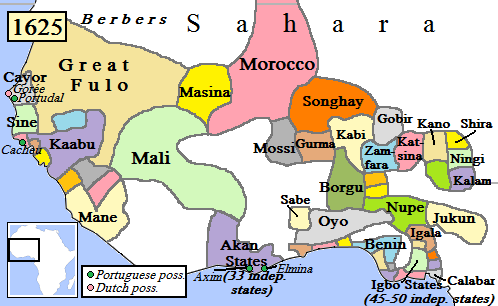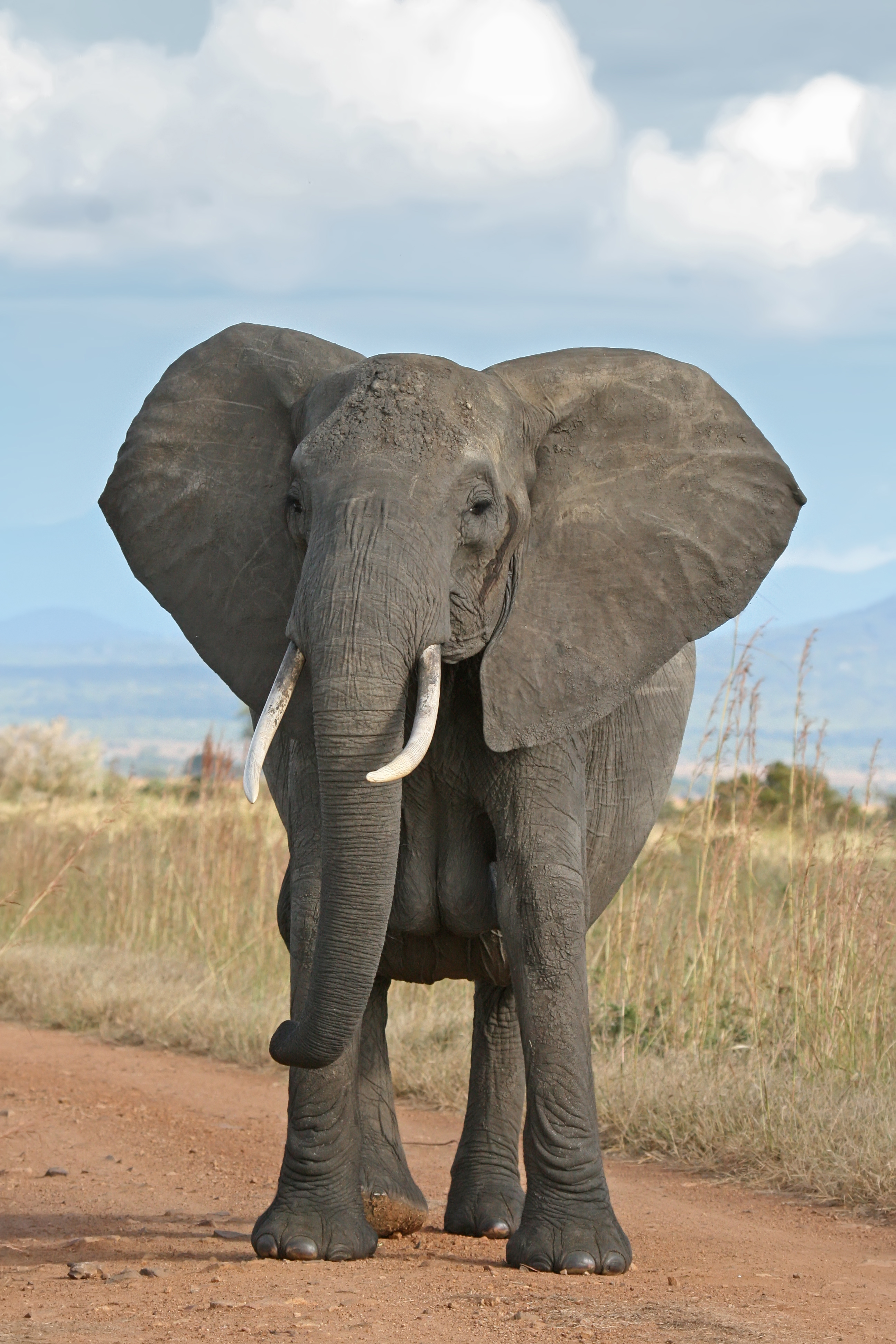|
Awole
Awole Arogangan, sometimes spelled Aólè, was the Alaafin (''emperor'') of the Oyo empire in northwestern Yorubaland, West Africa, from 1789-1796. His paranoid, vindictive reign set the stage for the collapse of the empire in the early 19th century. Early Life As a prince, Awole was active in the Atlantic slave trade. At one point he attempted to illegally sell a friend of his into slavery, but was stopped and punished by the Baale of Apomu, the town where the crime had taken place. Reign In 1789 Awole was elected as Alaafin, replacing Abiodun whose reign was noted for its peace and prosperity. He narrowly beat out another challenger, Afonja. He had inherited a militarily weakened empire, but his reign further intensified divisions among Oyo leaders. In 1793 he sought revenge on the Baale of Apomu, who fled to his sovereign the Ooni of Ife. Although Ife was militarily much weaker than Oyo, as the spiritual center of the Yoruba people it was sacrosanct. The Baale eventually com ... [...More Info...] [...Related Items...] OR: [Wikipedia] [Google] [Baidu] |
Oyo Empire
The Oyo Empire was a Yoruba people, Yoruba empire in West Africa. It was located in present-day western Nigeria (including the South West (Nigeria), South West zone, Benin Republic, and the western half of the North Central (Nigeria), North Central zone). The empire grew to become the largest Yoruba language, Yoruba-speaking state through the organizational and administrative efforts of the Yoruba people, trade, as well as the military use of cavalry. The Oyo Empire was one of the most politically important states in Western Africa from the late-16th to the early 18th century and held sway not only over most of the other kingdoms in Yorubaland, but also over nearby African states, notably the Fon people, Fon Kingdom of Dahomey in the modern Republic of Benin on its west. History Legend of origin The legendary origins of the Oyo Empire lie with Ọranyan (also known as Ọranmiyan), the last prince of the Yoruba Kingdom of Ile-Ife (Ife). According to oral traditions, Ọranmiyan ... [...More Info...] [...Related Items...] OR: [Wikipedia] [Google] [Baidu] |
Kakanfo
The Oyo Empire was a Yoruba empire in West Africa. It was located in present-day western Nigeria (including the South West zone, Benin Republic, and the western half of the North Central zone). The empire grew to become the largest Yoruba-speaking state through the organizational and administrative efforts of the Yoruba people, trade, as well as the military use of cavalry. The Oyo Empire was one of the most politically important states in Western Africa from the late-16th to the early 18th century and held sway not only over most of the other kingdoms in Yorubaland, but also over nearby African states, notably the Fon Kingdom of Dahomey in the modern Republic of Benin on its west. History Legend of origin The legendary origins of the Oyo Empire lie with Ọranyan (also known as Ọranmiyan), the last prince of the Yoruba Kingdom of Ile-Ife ( Ife). According to oral traditions, Ọranmiyan made an agreement with his brother to launch a punitive raid on their northern neigh ... [...More Info...] [...Related Items...] OR: [Wikipedia] [Google] [Baidu] |
Abiodun (Oyo Ruler)
Abiodun (reigned 1770–1789) was an 18th-century ''alaafin,'' or king, of the Oyo people in what is now Nigeria. Oyo Empire Coming to the throne shortly after the Oyo subjugation of neighboring Dahomey, Abiodun soon found himself embroiled in a civil war over the goals of the newly wealthy state. Bashorun Gaha, the empire's prime minister and lord marshal, had used his power to pervert the constitutional terms of abdication in a bid to limit the powers of the ''Alaafin'' and gain more political power for himself. During Gaha's power play, he had succeeded in removing five corrupt dishonest kings. In terms of trade, while Abiodun favored economic expansion for its own sake, his opponents favored using the wealth from Dahomey's tribute to finance further military expansion. Abiodun soon proved victorious and pursued a policy of peaceful trade with the European merchants of the coast. This course significantly weakened the army, leaving his successor, Awole, facing a number o ... [...More Info...] [...Related Items...] OR: [Wikipedia] [Google] [Baidu] |
Alaafin Of Oyo
Oyo, Oyo State, is the seat of the line of the rulers of Oyo. Their territory, a constituent rump state, is located in what is now Nigeria. Since the 1900 political absorption into Southern Nigeria of the kingdom that it once served as a metropolitan center, the traditional monarchy has been either a tool of British indirect rule or a legally recognised traditional polity within the republic of Nigeria. In the Yoruba language, the word ' oba' means ruler or king. It is also common for the rulers of the various Yoruba domains to have their own special titles. In Ọ̀yọ empire, the oba is referred to as the Aláàfin, meaning owner of the palace. List of Alaafins of Oyo See also * Oyo Empire ** Yoruba states *** List of rulers of the Yoruba state of Dassa *** List of rulers of the Yoruba state of Icha *** List of rulers of the Yoruba state of Ketu *** List of rulers of the Yoruba state of Sabe * Lists of office-holders These are lists of incumbents (individuals ho ... [...More Info...] [...Related Items...] OR: [Wikipedia] [Google] [Baidu] |
Afonja
Afonja of Ilorin was the " Are-Ona-Kakanfo", or chief military leader, of the Oyo Empire. Laderin, the great-grandfather of Afonja, was the founder of Ilorin city. He was succeeded by his son, Pasin, a powerful warrior who became a threat and target to, Basorun Gaha, because of his rising profile. He was driven into exile and killed. Alagbin, his son was made Baale. After the death of Alagbin, his son, Afonja, took over. These were the only four Yoruba baale in Ilorin. Aole Arogangan Aole was installed King after the death of Abiodun in 1789. He was Abiodun's cousin. A tall and handsome man but a weakling. Afonja had a strong kinship relation with Aole because he was born at the palace of Alafin. This began the Cold war between Aole (Awole) and Afonja as they started to be suspicious of each other. During his reign, evil and wickedness pervaded the whole of the Oyo Empire. The rights of citizens were taken away, cruelty, treachery were order of the day. People were confiscat ... [...More Info...] [...Related Items...] OR: [Wikipedia] [Google] [Baidu] |
Nupe People
The Nupe (traditionally called the ''Nufawa'' by the Hausa people, Hausas and ''Tapa'' by the neighbouring Yoruba people, Yoruba) are an ethnic group native to North Central Nigeria. They are the dominant ethnic group in Niger State and an important minority in Kwara State. The Nupe are also present in Kogi State and The Federal Capital Territory. History The Nupe Kingdom emerged in the 14th-15th century, nestled between the Niger and Kaduna rivers. However, Nupe as a group and polity have a rich history dating back to 9,000 B.C. or 40,000 years ago in the Middle Niger and Niger-Benue confluence areas. Most accounts of the ancient kingdom were verbally transmitted legends. Notably, King Jibiri adopted Islam around 1770, marking a significant milestone. In the 1800s, Ma'azu's rule saw the Nupe Kingdom flourish, becoming the most powerful in Central Nigeria. Today, the Nupe people speak over 5 dialects: Central Nupe, Nupe Tako/Bassa-Nge, Kupa, Kakanda, and Dibo/Abawa/Gana-Gana. N ... [...More Info...] [...Related Items...] OR: [Wikipedia] [Google] [Baidu] |
Yoruba People
The Yoruba people ( ; , , ) are a West African ethnic group who inhabit parts of Nigeria, Benin, and Togo, which are collectively referred to as Yorubaland. The Yoruba constitute more than 50 million people in Africa, are over a million outside the continent, and bear further representation among the African diaspora. The vast majority of Yoruba are within Nigeria, where they make up 20.7% of the country's population according to Ethnologue estimations, making them one of the largest List of ethnic groups of Africa, ethnic groups in Africa. Most Yoruba people speak the Yoruba language, which is the Niger–Congo languages, Niger-Congo language with the largest number of native or L1 speakers. Geography In Africa, the Yoruba culture, Yoruba are contiguous with the Yoruboid languages, Yoruboid Itsekiri to the south-east in the northwest Niger Delta, Bariba people, Bariba to the northwest in Benin and Nigeria, the Nupe people, Nupe to the north, and the Ebira to the northeast in ... [...More Info...] [...Related Items...] OR: [Wikipedia] [Google] [Baidu] |
Ooni
The Ooni of Ile-Ife (Ọọ̀ni of Ilè-Ifẹ̀) is the traditional ruler of Ifẹ, Ilé-Ifẹ̀. The Ooni dynasty existed before the reign of Oduduwa which historians have argued to have been between the 7th-9th centuries A.D. After the demise of Oduduwa and Ogun’s fail attempt to take over the throne, Oduduwa's support base dispersed out of Ifẹ, Ile-Ife. Another account, but not in tandem with existing evidences, states that Ogun purposely sent all Oduduwa's children on different journeys to effect Yoruba territory expansion. Whatever the case, after Oduduwa's short reign, Ọbàtálá re-emerged as the king of Ile-Ife and the throne was rotated between Obatala and Obalufon houses until the return of Ọranyan, Oranmiyan who briefly interrupted the succession pattern. Popular history identifies Ooni Lajamisan to have been a son or grandson of Oranmiyan. Meanwhile Ife tradition remains unclear about his ancestry. Lajamisan is often said to have opened the modern Ife his ... [...More Info...] [...Related Items...] OR: [Wikipedia] [Google] [Baidu] |
Atlantic Slave Trade
The Atlantic slave trade or transatlantic slave trade involved the transportation by slave traders of Slavery in Africa, enslaved African people to the Americas. European slave ships regularly used the triangular trade route and its Middle Passage. Europeans established a coastal slave trade in the 15th century and trade to the Americas began in the 16th century, lasting through the 19th century. The vast majority of those who were transported in the transatlantic slave trade were from Central Africa and West Africa and had been sold by West African slave traders to European slave traders, while others had been captured directly by the slave traders in coastal raids. European slave traders gathered and imprisoned the enslaved at slave fort, forts on the African coast and then brought them to the Americas. Some Portuguese and Europeans participated in slave raids. As the National Museums Liverpool explains: "European traders captured some Africans in raids along the coast, but bou ... [...More Info...] [...Related Items...] OR: [Wikipedia] [Google] [Baidu] |
Apomu
Apomu is a medium-sized town in the Osun state. It has a population of about 71,656 people. History It is a historic town in osun state South west Yoruba territory, dating to the 16th century. For about 400 years, it was the only commercial center in the whole Oyo Empire. For its commercial endeavors, Apomu is well-known throughout Yoruba territory. Climate In Apomu, the entire year is hot and unpleasant, with the wet season being overcast and the dry season being partly cloudy. The average annual temperature Temperature is a physical quantity that quantitatively expresses the attribute of hotness or coldness. Temperature is measurement, measured with a thermometer. It reflects the average kinetic energy of the vibrating and colliding atoms making ... ranges from 67 to 94 degrees Fahrenheit, rarely falling below 61 or rising over 98.https://tcktcktck.org/amp/nigeria/osun/apomu Apomu's Hot Temperature From January 21 to April 9, the hot season, with an average dai ... [...More Info...] [...Related Items...] OR: [Wikipedia] [Google] [Baidu] |






